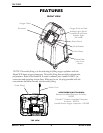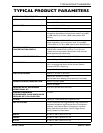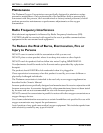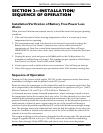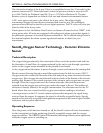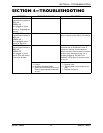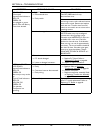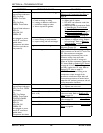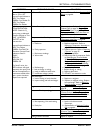
SECTION 2—INSTALLATION/SEQUENCE OF OPERATION
Platinum™Series 14 Part No 1110538
The electrical activation of the 4-way Valve is accomplished every 8 to 15 seconds by the
pressure sensor and P.C. Board electronics when the pressure reaches a set point of 21
p.s.i. (144.79 kPa) for Platinum 5 and XL; 25 p.s.i. (172.36) for Platinum 10. The time
between cycles is dependent on altitude, flow rate and internal environmental factors.
A P.E. valve opens just prior to the shift of the 4-way valve. This allows highly
concentrated oxygen to enter the just exhausted bed from the top. This additional
pressure allows the bed to start its cycle at a higher pressure. The P.E. valve will close just
after the shift of the 4-way valve.
If main power is lost, the Battery Free Power Loss Alarm will sound a short "BEEP", with
a long pause after. All units are equipped with a diagnostic alarm system that signals if
the pneumatic pressure or electrical systems malfunction. The Troubleshooting Guide in
this manual explains the alarm system signals and reasons, in detail, for your
convenience.
SensO
2
Oxygen Sensor Technology - Ceramic Zirconia
Sensor
Technical Description
The oxygen being produced by the concentrator flows out of the product tank and into
the flowmeter. A small flow of oxygen produced by the unit is sent through a precision
orifice to the oxygen sensor mounted on the printed circuit board.
As the oxygen enters the sensor, it passes through a screen and contacts the sensing disk.
Electric current flowing through a metal film resistor heats the disk in excess of 300°
C.
Oxygen molecules contact the electrode of the disk and pick-up extra electrons to become
oxygen ions. These oxygen ions are attracted to the electrode on the bottom of the zirconia
sensing disk. Because of the crystal structure of the zirconia, only oxygen ions can pass
through. When the oxygen ions reach the bottom electrode, the extra electrons are
released from the oxygen ions and oxygen molecules return to the air. The number of
electrons is directly related to the oxygen concentration. The electrons travel to the P.C.
board where they are counted and the oxygen concentration reading is calculated.
A microprocessor on the P.C. board contains software that interprets the signal being
received from the sensor. It compares the signal to clinically acceptable limits. Signals
outside of the clinically acceptable limits generate responses in the form of lights, audible
indicators, and/or system shut-down.
Operating Sequence
Once the power switch has been turned on ( ), the SensO
2
circuit will wait five minutes
for the concentrator to begin producing clinically acceptable oxygen and the oxygen
sensor to stabilize. The GREEN light will illuminate (indicating normal system operation)
while the oxygen sensor is warming up.
I
/





